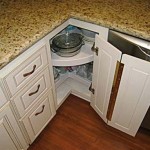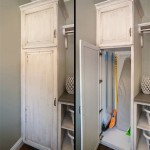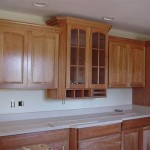Painting Kitchen Cabinets and Tiles: A Guide to Transformation
A fresh coat of paint can revitalize any kitchen. Painting kitchen cabinets and tiles is a popular and cost-effective way to achieve a modern and updated look. This process involves a series of steps, from preparation to finishing touches, that require careful attention to detail for optimal results. By following these steps, homeowners can transform their kitchens without the expense of replacing cabinets or tiles entirely.
Preparing for the Transformation
The success of any painting project hinges on thorough preparation. Before applying paint, cabinets and tiles must be cleaned and prepped for optimal adhesion. Begin by thoroughly cleaning the surfaces with a degreaser to remove any grease, oil, or dirt. Next, use sandpaper to lightly sand both the cabinets and tiles, creating a rough surface for the paint to grip. For cabinets, remove all hardware, such as handles and knobs, and mask off surrounding areas to prevent accidental paint splatters. On the tiles, cover any grout lines with painter’s tape to ensure clean edges. Finally, use a primer specifically designed for cabinets and tiles to create a smooth and even base for the paint.
Painting Cabinets with Precision
Applying paint to cabinets requires a steady hand and attention to detail. Start with a thin layer of paint using a high-quality brush or roller specifically designed for cabinets. For a smooth finish, use long, even strokes in one direction. Allow the first coat to dry completely before applying a second coat, ensuring even coverage and a durable finish. If using a sprayer, ensure proper ventilation and maintain a consistent distance from the cabinets for a smooth, even application. When applying the second coat, aim for a smooth, professional look without brush marks or drips. Take your time and let each coat dry thoroughly before moving on to the next step.
Transforming Tiles with Ease
Painting tiles is a simpler process than painting cabinets, requiring less prep work and fewer coats. After cleaning and sanding the tile surfaces, apply a layer of primer specifically designed for tiles. This primer helps create a smooth, even surface for the paint to adhere to. Once the primer has dried, apply one or two thin coats of tile paint, using a specialized brush or roller. Ensure even coverage and let each coat dry completely before applying the next. For a professional look, use painter's tape to create clean lines around the grout lines, preventing paint from bleeding into the grout. Allow the final coat to dry completely before removing the tape and enjoying your newly transformed tile surfaces.
Finishing Touches for a Polished Look
Once the paint is completely dry, apply a sealant specifically designed for cabinets and tiles. Sealant helps protect the paint from scratches, stains, and moisture, ensuring a long-lasting finish. For cabinets, reattach the hardware, ensuring a secure and aesthetic fit. Use a damp cloth to wipe away any dust or debris, achieving a polished and finished look. For tiles, consider applying grout sealant to prevent the grout from absorbing moisture and staining, maintaining its clean appearance. Finally, step back and admire your newly painted kitchen cabinets and tiles, celebrating the transformation you've achieved.

How I Transformed My Kitchen With Paint House Mix

Painted Kitchen Cabinet Ideas Architectural Digest

Painted Kitchen Cabinets And Tile Backsplash A Year Later House Mix

How To Paint Kitchen Cabinets Like The Pros

Diy Painting Kitchen Tiles Eclectic Spark

15 Best Painted Kitchen Cabinets Ideas For Transforming Your With Color
:strip_icc()/painted-kitchen-cabinet-ideas-20-becca-interiors-southampton-0b04a571a07649deb33edae1e89d9c41.jpeg?strip=all)
29 Painted Kitchen Cabinet Ideas You Can Easily Copy

How I Transformed My Kitchen With Paint House Mix

Painting Kitchen Cabinets

How To Paint Kitchen Walls Tiles Cabinets True Value
Related Posts








